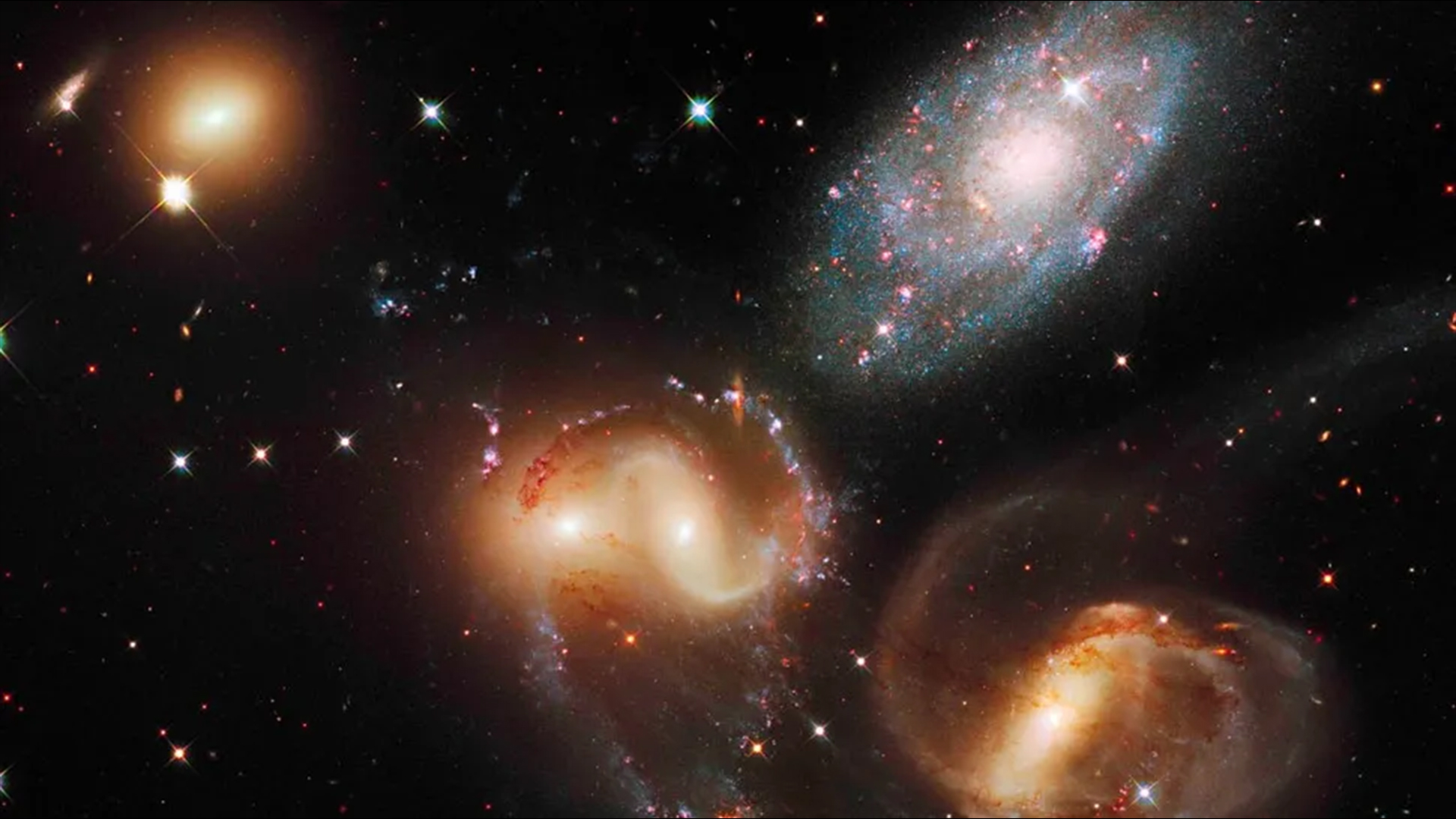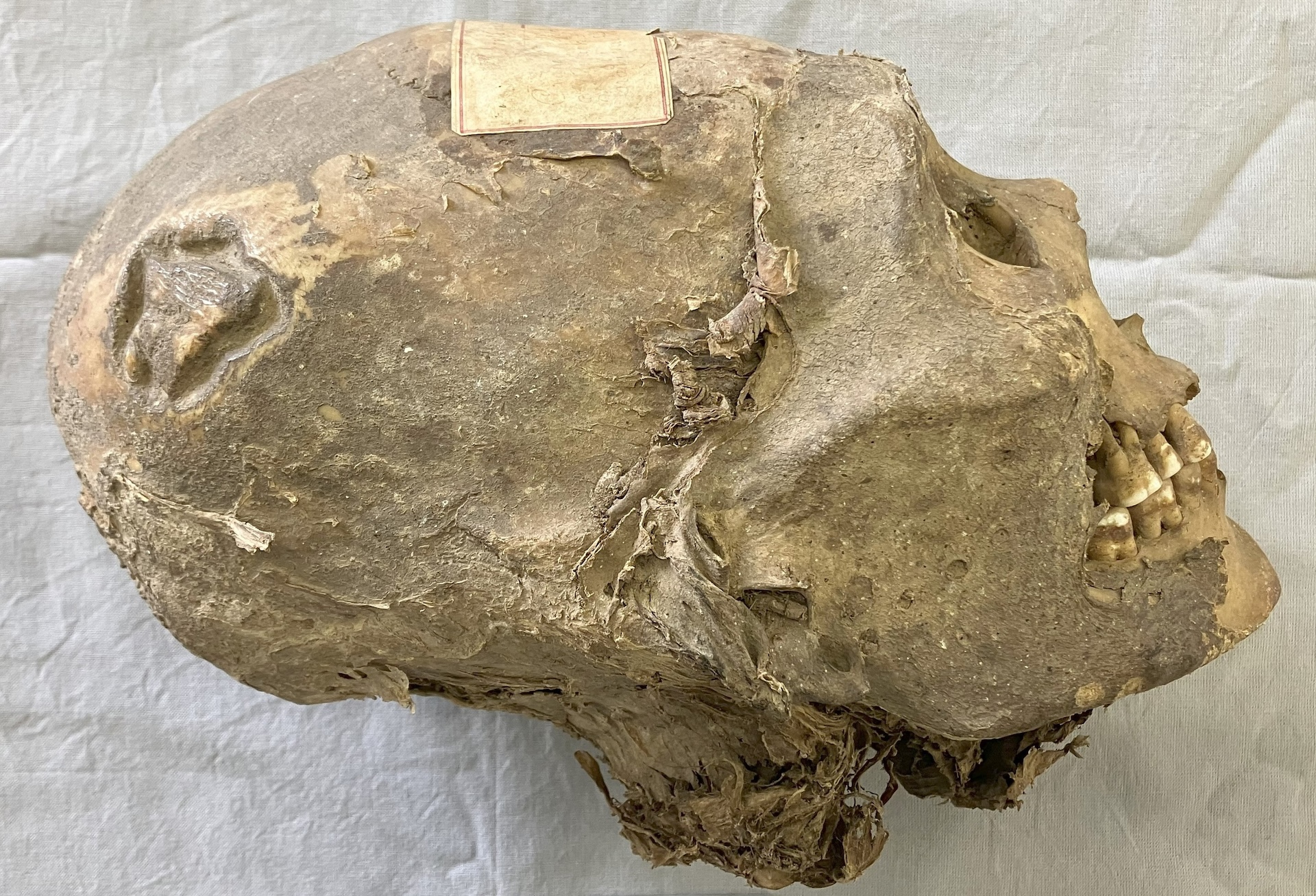Astronomers spot 1 of the most powerful 'sonic booms' in the universe as massive galaxy crashes into its neighbors
A shockwave caused by the galaxy NGC 7318b slamming into four other galaxies is akin to a "sonic boom from a jet fighter." Astronomers hope the event will reveal vital secrets about the often-violent evolution of our universe.

Astronomers have spotted one of the most powerful shock waves ever seen, caused by a galaxy slamming into four of its neighbors while traveling at 2 million mph (3.2 million km/h).
The cosmos-rattling event occurred in Stephan's Quintet, when one of the system's five galaxies, called NGC 7318b, smashed into the other four.
NGC 7318b's entry into the system created an immensely powerful shock front akin to a "sonic boom from a jet fighter," the researchers said. They hope that by studying it they can understand more about the violent and chaotic interactions between galaxies. They published their findings Nov. 22 in the journal Monthly Notices of the Royal Astronomical Society.
"It's basically a huge intergalactic field of debris," Marina Arnaudova, an astrophysicist at the University of Hertfordshire in the U.K., told Live Science. "The new intruder NGC7318b has smashed into the debris field, and compressed the plasma and gas in it. In doing so it has re-energised the plasma causing it to glow brightly at radio frequencies, and likely triggered star formation in the process."
Named after French astronomer Édouard Stephan, who discovered it in the 19th century, Stephan's Quintet is a group of five galaxies that are "locked in a cosmic dance of repeated close encounters," according to NASA.
Related: James Webb Space Telescope discovers mysterious 'red monster' galaxies so large they shouldn't exist
The quintet sits around 290 million light-years from Earth and was the first compact galaxy group ever spotted. It has been imaged by numerous telescopes, including the Hubble Space Telescope and the James Webb Space Telescope.
Get the world’s most fascinating discoveries delivered straight to your inbox.
To investigate the quintet's behavior and cosmic history, the researchers behind the new study used the William Herschel Telescope Enhanced Area Velocity Explorer (WEAVE), a spectrograph mounted to the William Herschel Telescope on the island of La Palma.
By breaking light from the system down into its constituent parts, the WEAVE spectrograph tracked the debris remnants, the births of new stars and the trails of ionized gas left behind by the force of the collision. All of these elements were stirred up by the shock front, which rippled out at hypersonic speeds following NGC 7318b's entry into the system.
Astronomers studying Stephan's Quintet could gain valuable insights into how collisions and mergers stretching back to the Big Bang shaped the galaxies we see today, and what the system may look like in the future, the researchers said.
"This type of galaxy collision in Stephan's Quintet is a rare chance to see a complex set of galaxies caught in the act of colliding," Arnaudova said. "As to how it will end up, well it's likely that it will eventually merge with one of the group members, but not for millions or billions of years because the sizes and speeds of these things are so vast."
The observations are the first to be made by WEAVE, but far from the last. The researchers say the spectrograph will also be used to study the reionization of the universe in the aftermath of the Big Bang; cast new light on how stars form and accrete over time; and perform a number of "galactic archaeology" experiments to find how our own Milky Way grew over cosmic time.

Ben Turner is a U.K. based writer and editor at Live Science. He covers physics and astronomy, tech and climate change. He graduated from University College London with a degree in particle physics before training as a journalist. When he's not writing, Ben enjoys reading literature, playing the guitar and embarrassing himself with chess.
